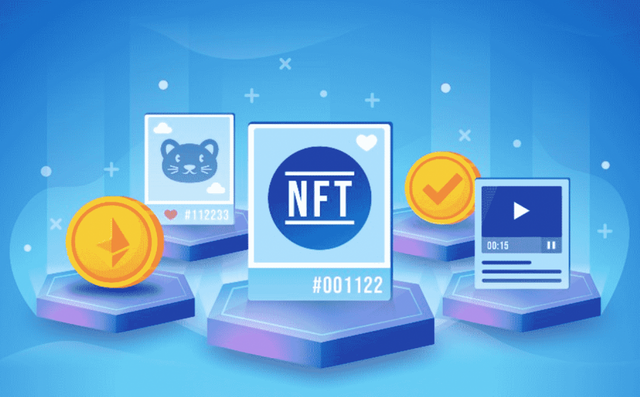
The rise of blockchain and decentralized technology has brought about a new form of digital assets known as Non-Fungible Tokens (NFTs). These unique tokens are used to verify the ownership of digital assets like art, music, videos, and collectibles. NFTs have taken the world by storm and created a booming industry, with many artists and creators selling their work for millions of dollars.
One of the most popular NFT marketplaces is Opensea, which has become the go-to platform for buying and selling NFTs. In this blog, we'll explore the basics of NFT marketplaces, and show you how to create your own Opensea-like NFT marketplace.
What is an NFT Marketplace?
An NFT marketplace is an online platform where individuals can buy, sell, and trade NFTs. The marketplace acts as an intermediary between buyers and sellers, providing a secure and reliable environment for transactions. NFT marketplaces have become increasingly popular as more and more people are discovering the potential of NFTs.
Why Create Your Own NFT Marketplace?
There are several reasons why you might want to create your own NFT marketplace:
- Profit: The NFT market is growing rapidly, and there's a lot of money to be made by offering a platform for buying and selling NFTs.
- Control: By creating your own NFT marketplace, you'll have complete control over the platform's design, features, and fee structure.
- Flexibility: With your own NFT marketplace, you'll be able to add new features and capabilities as you see fit.
- Branding: Creating your own NFT marketplace will help establish your brand and provide you with a unique platform to showcase your products and services.
Steps to Create Your Own NFT Marketplace
- Research the market: Before you start building your own NFT marketplace, it's important to do your research. Study existing NFT marketplaces like Opensea, Rarible, and SuperRare, to understand how they work and what features they offer.
- Choose a blockchain: NFTs are built on blockchain technology, so you'll need to choose the blockchain that you want to build your marketplace on. Some popular options include Ethereum, Binance Smart Chain, and Polygon.
- Plan your platform: Once you've chosen your blockchain, it's time to plan your platform. You'll need to decide on the features you want to include, such as the ability to buy, sell, and trade NFTs, and the option to showcase your products and services.
- Build the platform: This is the technical part of creating your NFT marketplace. You'll need to have a solid understanding of blockchain technology, as well as programming skills to build the platform. If you're not comfortable with coding, you can hire a developer to help you.
- Launch the platform: Once your platform is built, it's time to launch it. You'll need to promote your NFT marketplace and build a user base. You can use social media, online advertising, and other marketing techniques to get the word out.
- Monitor and maintain the platform: After launch, you'll need to monitor your platform and make sure it's functioning properly. You may need to make updates and add new features over time to keep your platform competitive and user-friendly.
Creating your own NFT marketplace can be a lucrative opportunity, but it requires careful planning and a solid understanding of blockchain technology.
To further elaborate on creating your own NFT marketplace similar to OpenSea, here are some key considerations and steps to keep in mind:
- Determine the Purpose: Start by defining the purpose of your marketplace. What kind of NFTs do you want to host and what is the target audience? Will you only be focused on art, or will you allow a variety of other NFTs like collectibles, gaming items, or virtual real estate?
- Choose a blockchain: There are several blockchains that support NFTs, including Ethereum, Binance Smart Chain, Polygon, and more. Consider which blockchain best aligns with your goals and has the features you need.
- Decide on the revenue model: Determine how you will generate revenue from your NFT marketplace. Some options include transaction fees, listing fees, and a percentage of sales.
- Develop the user interface: The user interface (UI) is critical to the success of your marketplace. It should be intuitive, easy to navigate, and appealing to users. You may want to consider working with a designer to create a unique look and feel.
- Build the backend: The backend of your marketplace will handle the storage and transfer of NFTs and handle the payments and settlement of transactions. You will need to build a secure, scalable infrastructure that can handle a high volume of transactions.
- Integrate with a payment processor: To facilitate transactions, you will need to integrate with a payment processor like Stripe, PayPal, or others. You may also need to integrate with a cryptocurrency exchange to convert funds into ETH or other cryptocurrencies.
- Consider security: NFT marketplaces handle valuable assets, so it is important to prioritize security from the start. Make sure your marketplace uses encryption and implements best practices for safeguarding user data and funds.
- Launch and market your marketplace: Once you have completed development, you will need to launch your marketplace and market it to potential users. Consider reaching out to NFT creators and communities, participating in NFT-related events and forums, and using social media to promote your platform.
By following these steps and staying focused on your goals, you can create a successful NFT marketplace similar to OpenSea. Good luck!
We highly recommend that you deepen your knowledge of steemit and introduce yourself to the Newcomers Community - Friends in the community will guide you well and politely. Hope it is useful.
Downvoting a post can decrease pending rewards and make it less visible. Common reasons:
Submit